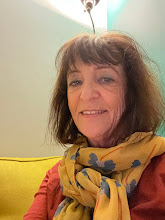 This Summer, the Museum of Fine Arts Houston offers a unique display with the exhibition Cosmic Dialogues: Selections from the Latin American Collection. The artists represented have a common interest in light and movement, with works combining futurism, light art, op art, kinetic art and constructivism. Highly inspired by European movements, they are innovative in their concepts. A large area is dedicated to Gego, a Venezuelan artist, followed by the major installation from Gyula Kosice, The Hydrospatial City, (1946-1972). The last room allows to sample works from diverse artists, among them, Abraham Palatnik and Julio Le Parc.
This Summer, the Museum of Fine Arts Houston offers a unique display with the exhibition Cosmic Dialogues: Selections from the Latin American Collection. The artists represented have a common interest in light and movement, with works combining futurism, light art, op art, kinetic art and constructivism. Highly inspired by European movements, they are innovative in their concepts. A large area is dedicated to Gego, a Venezuelan artist, followed by the major installation from Gyula Kosice, The Hydrospatial City, (1946-1972). The last room allows to sample works from diverse artists, among them, Abraham Palatnik and Julio Le Parc.In the hall, two hanging sculptures from Gego introduce the display of a significant body of work, which includes wall sculptures, more suspended sculptures, drawings and prints. Built with stainless steel wire and iron, the sculptures have the lightness of spiderwebs. Enclosing an empty space, spreading their shadows on the walls of the gallery, they stay decorative. The eyes must accommodate before walking in the next room where the visitor gets immersed in the world of Kosice. He took twenty five years to realize his installation based on the premises that "Man will not end his days on earth". The habitats conceived for the survival of humans after the destruction of the earth are interesting from an architectural point of view. A total of nineteen Plexiglas models float in space surrounded by seven light boxes along the walls. Bathing in a bluish ethereal atmosphere, the transparent structures are glowing in a golden light and project their shadows on the floor and walls. Designed for a futuristic world, they are a mixture of science fiction and poetic dreams. A pamphlet available for reference, contains technical drawings about each "station" and its function. A video and photo collages dedicated to the installation follow-up in the passage leading to the last room humming with the sounds of motors and livened up by flashes of lights. Each work has its own rhythm and the two Mòviles from Julio Le Parc, 1968 and 1960-1966, caught my attention first. Made of squares of metal suspended vertically, in perpetual slow motion, they reflect the lights with a disorienting effect. The artists are represented by one or two iconic works for a total of nine: Gregorio Vardanega with his "chromatic square spaces turning in a spiral" made in 1968, Martha Boto his companion in Paris, with a kinetic op piece Optique Electronique, 1965, as well as Horacio Garcia Rossi with one of his "unstable light structure" made in 1966. Two small wall sculptures from Kosice integrate water interacting with light. A special mention should be made about Abraham Palatnik who became an innovator and catalyst for the light movement in Brazil. His five minutes video, "a kine-chromatic piece" made in 1962, features an evolving abstract landscape in constant shift of colors, orange, violet, red, fuchsia, with no obvious start or end.
 The spotlight given to Gego's work results in a long winded introduction to the show, a black and white monotonous display lacking surprises in an effort to show "all the collection". The following installation from Kosice is a welcomed adventure in a cosmic world of galaxies and space stations. The subject related to the future of the human race on this planet is more than ever haunting artists, among them Dawn Dedeaux in New Orleans. Kosice's transparent dwellings bring an Orwellian flavor with their promotion of a communal life where no privacy is expected. In the late fifties and sixties, a great number of the Latin American artists migrated to France where they found a nurturing environment and associated with French artists like Victor Vasarely who founded the GRAV (groupe de recherche d'art visuel). They brought innovative ideas and introduced media like light, Plexiglas, Formica, motors, pumps, water...
The spotlight given to Gego's work results in a long winded introduction to the show, a black and white monotonous display lacking surprises in an effort to show "all the collection". The following installation from Kosice is a welcomed adventure in a cosmic world of galaxies and space stations. The subject related to the future of the human race on this planet is more than ever haunting artists, among them Dawn Dedeaux in New Orleans. Kosice's transparent dwellings bring an Orwellian flavor with their promotion of a communal life where no privacy is expected. In the late fifties and sixties, a great number of the Latin American artists migrated to France where they found a nurturing environment and associated with French artists like Victor Vasarely who founded the GRAV (groupe de recherche d'art visuel). They brought innovative ideas and introduced media like light, Plexiglas, Formica, motors, pumps, water...The relatively small exhibition provides a review of a significant movement and allows to discover or rediscover artists sometimes overshadowed by better known Latin American artists from the same period (who also came to Paris) like Carlos Cruz Diez or Jesús Rafael Soto.
photographs by the author
"Esfera No.7", Gego, 1977
"Optique Electronique", Martha Boto, 1965
"The Hydrospatial City", detail, Gyula Kosice, 1946-1972


1 comment:
Great readingg
Post a Comment